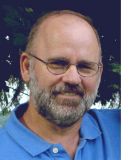| « The Show Must Go On | The Origins Of Some Of Those Crazy Band Names » |
The Quimbys Method on a Budget
Recently, CyberMidi featured an article by Dave Gash about his MIDI-driven one-man band, The Quimbys. I already knew how Dave accomplished all his magic but actually seeing his article on CyberMidi got me to re-think my own one-man band show. Up until now I had been using MIDI files played though my Yamaha PSR-1500 keyboard, to which I played along and sang. Now this is fine if the song doesn’t feature backup vocalists who sing counter to the lead vocalist. Maybe I should expand on that a bit.
Let’s say I’m playing the Tommy James song, “Crystal Blue Persuasion.” Well, in that particular song, Tommy sings and then his backup singers answer, if you will. I can accomplish the answering by kicking in my Digitech Vocalist and sounding like three or four backup singers. Fine. But what happens when the backup singers’ parts overlap the lead vocalist, as in The Mamas & The Papas’ tune, “California Dreaming?” In that case you have to have the backup harmony parts pre-recorded, like Dave does with Cakewalk, where you can add vocal parts to the MIDI tracks and play along with them live.
Well, not being well-versed in Cakewalk and seeing that my attention span for owner’s manuals is ZIP, I couldn’t use that method. But I still wanted to utilize Dave’s fuller sound in my act. I managed to work around my Cakewalk inadequacies with the following method, which is available MOSTLY FREE on the web. Here’s how I did it.
I start with the MIDI file, making sure all the levels of all the tracks are just where I want them. I’ll be turning that MIDI file into a WAV file so the tweaking is the important part, before the WAV file is created. There are free programs out there on the web that will accomplish this task if you look for them. Once I have the music part of my file converted to a WAV file, I save it in its own directory labeled with the song title. Using “California Dreaming” as my example, I may call that directory CALDREAM. The music part of the MIDI that is converted will be called CALM.WAV.
Next in line is another free, invaluable program from the web called Audacity. This program will let you record, edit the WAV files, add tracks, adjust volumes, pans, effects, etc. Once I load CALM.WAV, I plug my microphone into the sound card on my PC and hit Record on the Audacity screen. The music will play on one track and you can sing the background vocals onto the new track that opens up. If you make a mistake, just delete the vocal track and start over. At any rate, once the background vocals are laid down with the music track, save the Audacity file as an MP3 file, called, for example, CALDREAM.MP3.
You can see where this is going, can’t you? With the resultant MP3 file in hand, I can load it onto my MP3 player, run that through my P.S. system and play along with it, like I used to do with the MIDI files. Now, when I sing, “All the leaves are brown” the MP3 file will play the backup vocals and you’ll hear “all the leaves are brown” in a professional-sounding three-part harmony that overlaps your lead vocals—something you couldn’t do with just a MIDI file.
Remember, though, like I mentioned earlier, the important part is to tweak the music MIDI file until you’re totally satisfied with the balance, because once you turn it into a WAV file, the tweaking part is all done. You’re stuck with that mix unless you start over. And, unless you’re adept at sequencing your own MIDI files, the other important part is start with a professional sequence, like the ones you find here at Cybermidi. Just delete the melody track and convert the rest. Once you do it a few times, it’ll become second nature and you can pound out a decent-sounding MP3 file in about 20 minutes.
The last advantage I want to touch upon is the fact that for those of you who only play guitar or if you don’t have the $1,000 to shell out for a decent MIDI keyboard, you can achieve the same full sound with just your MP3 player and your P.A. system, sort of an “unplugged” venue, if you will. Personally, I’ve found a new enthusiasm for playing since I found this method. I can now play a lot of songs that I otherwise couldn’t tackle because of my backup vocal limitations.
My thanks to Vin at Cybermidi for the great sequences and also to Dave Gash, Mr. Quimby, for his inspiration and help with my project.
©2007 Bill Bernico for CYBERMIDI.com Downwind Publications



Recent comments